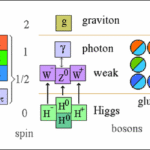If you try to squeeze matter too tightly, something strange happens.
It starts to push back — not because it’s hot, but because the electrons inside simply refuse to share the same space.
That resistance is called electron degeneracy pressure — a pressure that exists not from heat or movement, but from the quantum rule that says no two electrons can ever be identical in every way.
What Is Electron Degeneracy Pressure?
At its core, electron degeneracy pressure is just this:
The pushback that happens when electrons are forced too close together, but can’t occupy the same position or energy state.
It’s like trying to fit two people into one seat — they’ll automatically push apart because the rules of space won’t allow overlap.
Now imagine that happening billions of times inside matter — electrons keeping their distance, generating pressure even when everything else has gone still.
That’s electron degeneracy pressure.
In ordinary matter, atoms are held together by electromagnetic forces — the attraction between negatively charged electrons and positively charged nuclei.
But under extreme compression, something deeper takes over.
As electrons are squeezed into smaller and smaller spaces, they begin to resist — not because of physical hardness, but because of quantum mechanics.
At that level, the Pauli Exclusion Principle applies:
No two electrons can occupy the same quantum state at the same time.
So, when many electrons are packed tightly, they run out of unique states to occupy. The only way to follow the rules of physics is to push back — creating pressure that doesn’t come from temperature, but from quantum identity itself.
That’s electron degeneracy pressure.
Pressure Without Heat
In gases, pressure comes from particles moving and colliding — faster motion means higher temperature and pressure.
But degeneracy pressure is different:
It exists even at absolute zero, when there’s no thermal motion at all.
Why? Because electrons are fermions — particles that obey the exclusion principle.
They can’t overlap completely, so they naturally maintain a kind of personal space in the quantum world.
Trying to compress them beyond that boundary increases their momentum, forcing them to move faster — which, in turn, generates resistance.
It’s like trying to cram people into a room where no two can stand in the same spot. Eventually, you can’t fit any more — not because they’re pushing, but because the rules won’t allow it.
Everyday Analogy
Think of a stack of books arranged by height.
Each book has to be placed on its own shelf because no two can occupy the same exact space.
The more books you have, the higher your shelf must go — the system expands or pushes back to accommodate identity.
That’s essentially what electrons do inside atoms and compressed matter.
Beyond the Stars
While this phenomenon becomes dramatic in white dwarfs and neutron stars, electron degeneracy pressure is not limited to astronomy.
It’s a universal concept that:
- Defines the structure of atoms and their electron shells.
- Influences how metals resist compression.
- Contributes to the stability of solid matter.
- Shapes the quantum behavior of dense materials in laboratories.
Every object that resists total collapse — from a diamond on your finger to the atoms in your hand — owes part of its stability to this quantum pressure.
The Quantum Balancing Act
Here’s what’s truly fascinating:
Electron degeneracy pressure depends on how crowded the electrons are, not how hot the system is.
Compress matter enough, and degeneracy pressure rises dramatically — regardless of temperature.
Mathematically, the relationship comes from the Fermi energy — the energy of the highest occupied electron state at absolute zero.
When electrons are packed tightly, the Fermi energy increases, producing a counteracting force that stabilizes matter against further compression.
This is why matter doesn’t simply collapse into an infinitely dense blob.
Quantum mechanics, quietly and invisibly, says “no.”
A Universal Quantum Limit
You can think of electron degeneracy as the unseen backbone of matter — a principle that ensures the universe remains structured and stable.
It’s the same rule that gives:
- Atoms their unique arrangement of electrons (defining chemistry).
- Crystals their rigidity (defining materials).
- Stars their balance (defining astrophysics).
- At every scale, from laboratory physics to cosmic evolution, the message is the same:
Identity creates order.
Order creates resistance.
Resistance sustains existence.
In Essence
Electron degeneracy pressure is the pressure of existence itself — a quantum law that says nothing can truly be identical, not even particles of the same kind.
And from that impossibility, matter finds its balance.
It’s the ultimate expression of individuality in physics — every electron holding its own place in the grand structure of the universe, ensuring that everything from atoms to stars stays perfectly distinct.
Summary:
- Caused by the Pauli Exclusion Principle — no two electrons share the same quantum state.
- Exists independent of temperature — even at absolute zero.
- Provides pressure that resists compression at atomic and stellar scales.
- Maintains atomic structure, material stability, and stellar balance.
- Represents the quantum identity that defines all matter.


